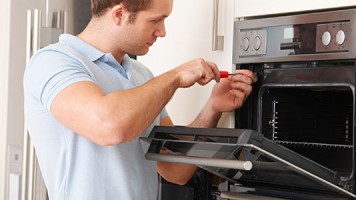I have a gas range that was flagged by the gas company CO levels to high. I have a detector but didn’t bring it with me ( I was informed it was a gas leak and just brought my sniffer) Visual inspection showed a normal blue flame in oven .It is in a small apartment with no vent and the gas company didn’t leave any ppm #s .what should I be looking for to feel confident it’s not the oven just the size of apartment and no ventilation?
Visual inspection of oven flame and color.
- Guest asked 6 years ago
Hello
You will need to leak check ALL gas fittings from the front of the range near the gas valve to the back to the flex gas connection and any exposed gas pipe fittings. We check with an electronic leak detector and florescent soap bubbles. Also make sure this unit was not converted from natural gas to LP or reversed, a wrong orifice or conversion can case high CO levels. I have provided the LP ( Propane ) conversion instructions for this model so you can verify the orifice size for natural gas as 1.68 and it will have a ( N ) stamped on it for natural gas . The Propane orifice head will have a .99 orifice opening and have an ( L ) stamped on it for LP propane gas. We have seen propane converted units hooked to natural gas and reversed. If we cannot find any leaks or issues with the appliance, we advise them to call a home inspection company. Most home inspection company’s are certified in Co detection and have the best up to date CO detection equipment. We then do not charge the customer anything, these are rare situations and we do not want the liability.
The U.S. Standards for CO levels are at a maximum of 35 ppm of CO for 1-hour exposure (this should not be exceeded more than once per year). Maximum of 9 ppm of CO for 8-hour exposure (not to be exceeded more than once per year).
- AV Repair Help answered 6 years ago
- You must login to reply
Please login first to submit.


